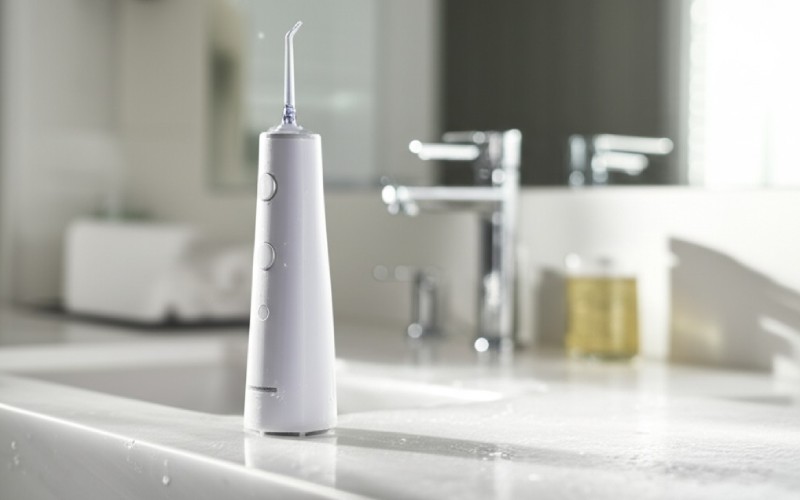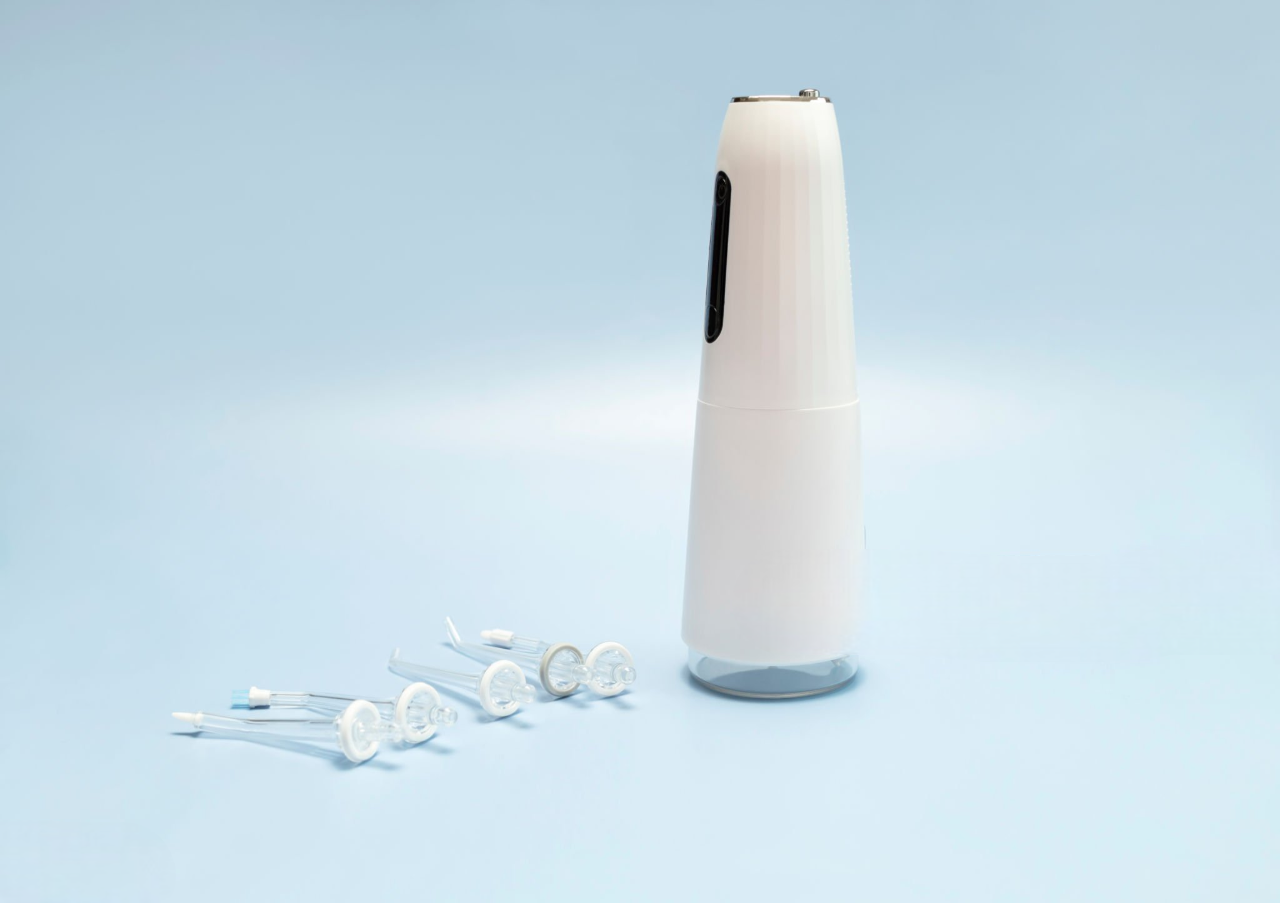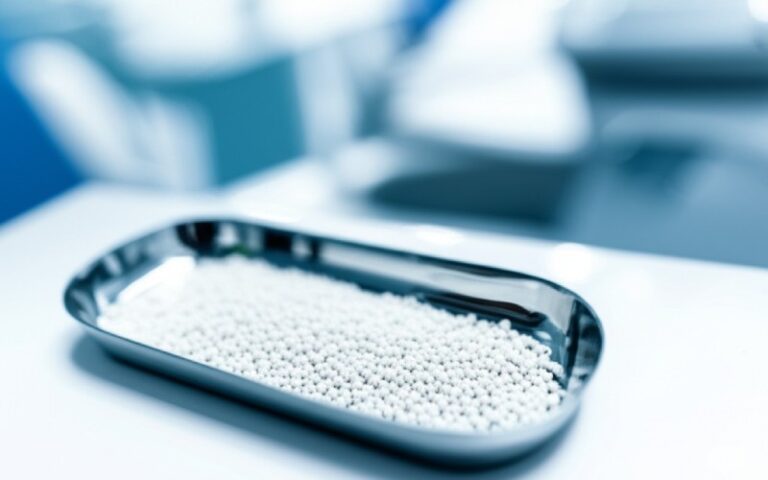
The Pros and Cons of Water Flossers: My Guide to Better Oral Health
Could a little jet of water really do the job? In this article, we will look at the pros and cons of water flossing. I’ll explain how les appareils de nettoyage à l'eau work, if they can replace traditional flossing, and what to look for when buying one. If you want to improve your santé bucco-dentaire, this is for you.
Table des matières
What Exactly Is a Water Flosser, Anyway?
Let’s start with the basics. A le fil dentaire is a device for your home soins bucco-dentaires. Il est also known as an oral irrigator. The name Waterpik is a famous brand, but it has become a generic term for these devices, like Kleenex is for tissues. These machines use water to clean between your teeth and along your ligne gingivale. Think of it as a power washer for your mouth. It shoots a thin stream of water to wash away tiny bits of food and sticky plaque.
A le fil dentaire looks like a small machine with a tank for water and a handle with a tip. The idea is simple. You fill the reservoir with warm water. Then you point the tip between your teeth and turn it on. The oral irrigator does the rest. Many people find this cleaning method much easier and more comfortable than fil de soie.
The main goal of an oral irrigator is to reach places your brosse à dents can’t. Even the best brushing leaves plaque et food particles behind. That is where problems like a cavité ou maladie des gencives start. A le fil dentaire aide rincer away this hidden gunk. This helps keep your gomme tissue healthy. It’s a powerful tool for anyone who wants to take their soins bucco-dentaires to the next level.
How Does a Water Flosser Work Its Magic?
The science behind les appareils de nettoyage à l'eau is pretty neat. These devices use a pressurized stream of pulsating water. This means the water doesn’t just flow out. It pulses, or shoots out in tiny, rapid bursts. This pulsating action also massages your gomme tissue. This helps improve circulation and keeps your gomme strong and healthy. The high-pressure water stream is strong enough to blast away plaque et food debris.
When you point the jet between your teeth, the water to clean away food gets deep into crevices. It can clean within the gum pockets, which are tiny spaces between your tooth and gomme. Bacteria love to hide in these pockets. If they are not cleaned out, they can cause gingivite ou même maladie parodontale. The pulsating water jet is great at flushing away bacteria from these hard-to-reach areas. It’s a different kind of clean. Fil de soie has to gratter les plaque off. A le fil dentaire uses force and water to wash it away.
Nombreux les appareils de nettoyage à l'eau, especially a Fil dentaire Waterpik, are clinically proven to be effective. The combination of pressure and pulsation is key. The pressure dislodges stubborn bits of food. The pulsations help clean and stimulate the gomme tissue. Using a le fil dentaire feels like giving your entire mouth a deep clean every single day. It’s very satisfying to rincer and see what your brosse à dents missed.

Are Water Flossers Better Than Traditional Flossing?
This is the big question everyone asks. The best cleaning tool is the one you will actually use. Many people with arthrite or other issues with their hands find traditional flossing very difficult. A le fil dentaire is much easier to hold and guide.
Cependant, traditional string floss has one key advantage. It can physically gratter plaque from the surface of the tooth. A le fil dentaire rinses the area very well, but it doesn’t have that scraping action. Some dentists recommend using both. They suggest using a water flosser first to loosen everything up. Then, follow up with fil de soie to make sure the tooth surfaces are perfectly clean. This gives you the best of both worlds.
For many people, water flossers offer a fantastic alternative. They are great at plaque removal and are proven to reduce gomme bleeding and gingivite. In the end, it comes down to personal preference. If you hate fil dentaire, a le fil dentaire is much better than doing nothing at all. Unlike floss, it is less likely to cause irritation for people with gencives sensibles.
What Are the Biggest Pros of Using a Water Flosser?
The benefits are huge, especially if you have unique dental needs. One of the biggest pros is for people with a brace. Traditional flossing avec un brace is a nightmare. A le fil dentaire makes it easy to clean around brackets and wires. The same goes for anyone with an implant ou non-removable bridgework. A le fil dentaire can get into those tight spaces without any trouble.
Another big plus is gomme health. The jets of water massage the gomme, which can prevent or reduce maladie des gencives. It’s very effective at cleaning poches à gomme and reducing bleeding. If you suffer from gingivite, a le fil dentaire can be a game-changer. It helps clean away food particles et plaque that cause inflammation.
Finally, les appareils de nettoyage à l'eau are just easy and comfortable to use. There is no need to wrap string dental floss around your fingers. You just point and spray. Most models have réglable pressure settings, so you can find a level that feels good for you. This makes it a great option for people with gencives sensibles. The feeling of a clean mouth after using a water flosser is amazing. It feels like you just left the dentiste‘s office.
Are There Any Cons to Water Flossers I Should Know About?
Of course, no product is perfect. It’s important to look at the pros and cons. One of the biggest downsides is the cost. A de haute qualité le fil dentaire can be more expensive than a pack of fil dentaire. You have to see it as an investment in your soins bucco-dentaires. They also take up more space in your bathroom. Countertop models need an electrical outlet and a spot near your sink.
Another con is that they can be a bit messy at first. When you’re learning, you might spray water all over your bathroom mirror. My tip is to lean over the sink and keep your lips slightly closed around the attachment tip. This helps guide the water from the reservoir into the sink. It takes a little practice, but you’ll get the hang of it quickly.
Lastly, a le fil dentaire is not a magic wand. It can’t remove all the sticky plaque that is firmly attached to your teeth. Traditional flossing is better at that. So, some dentists believe that les appareils de nettoyage à l'eau are a great addition to your routine, but not a total replacement for fil de soie. You still need to brosse your teeth twice a day with a good dentifrice qui a fluorure.
Can a Water Flosser Replace My Toothbrush or Brush?
This is a very important point. A le fil dentaire cannot and should not replace your brosse à dents. Think of it this way: if your car is muddy, you might use a pressure washer to get the big chunks of dirt off. But you still need to scrub it with a sponge and soap to get it really clean. Your mouth is the same.
Votre brosse à dents et dentifrice are for scrubbing the surfaces of your teeth. They do the heavy lifting of removing plaque and polishing your enamel. A le fil dentaire is for cleaning the spaces entre your teeth and under the ligne gingivale. These are the hard-to-reach areas where your brosse can’t go. The two tools do different jobs. They work together as a team for good oral health.
So, the ideal routine is this: brosse your teeth for two minutes, twice a day. Then, use your le fil dentaire to clean between the teeth. Some people like to water floss before they brosse, and some do it after. Either way is fine. The important thing is that you do both. A le fil dentaire plus a good brosse is a powerful combination for preventing a cavité et gomme problèmes.

Which Type of Water Flosser Is Right for Me?
When you decide to consider a water flosser, you’ll see a few different types. The most common are countertop models et cordless models. Countertop models are larger. They plug into the wall and have a big reservoir for water. This means you can floss your whole mouth without needing to refill. They also tend to have more pressure settings et different tips for different needs.
Cordless les appareils de nettoyage à l'eau are smaller and run on batteries. They are great for travel or for small bathrooms with limited space. Their reservoir is smaller, so you might need to refill it once to clean your entire mouth. A cordless le fil dentaire might also have a bit less power than countertop units. But they are still very effective. Making a decision between the two often comes down to your space and lifestyle.
Many brands like Waterpik offer various models. Some come with a special attachment for cleaning around a brace or an implant. Some have a tongue-cleaning attachment. When you choose a le fil dentaire, think about what you need. Do you need something powerful for home use? Or something portable for travel? Reading reviews and comparing features will help you find the perfect le fil dentaire pour vous.
How Do I Start Using a Water Flosser Correctly?
Getting started is easy. First, fill the reservoir with lukewarm water. Cold water can be a shock, especially if you have gencives sensibles. Place the tip in your mouth avant you turn the unit on. This will prevent you from spraying water everywhere. Lean over your sink to let the water drain out as you go.
Start with the lowest pressure setting. Let your gomme get used to the sensation. You can gradually increase the pression de l'eau over time. Aim the jet of water at your ligne gingivale at a 90-degree angle. Pause briefly between each tooth. Trace along your ligne gingivale on both the inside and outside of your teeth, top and bottom. It should only take about a minute to do your whole mouth.
The first few times you use a water flosser, votre gomme might bleed a little. Don’t worry. This is often a sign of gingivite. Cela signifie que le le fil dentaire is cleaning areas that were neglected. After a week or two of regular use, the bleeding should stop. If it doesn’t, you should talk to your dentiste. Regular le fil dentaire will make your gomme stronger and healthier.
What Does My Dentist Think About Water Flossers?
Most dental professionals are very positive about oral irrigation. They see the results every day. Patients who use les appareils de nettoyage à l'eau often have less plaque buildup, healthier gomme, and less bleeding during checkups. They know that anything that makes soins bucco-dentaires easier is a good thing.
Dentists often recommend les appareils de nettoyage à l'eau for specific patients. This includes people with braces, implants, crowns, or bridges. It’s also great for those who struggle with traditional flossing. And it’s a powerful tool in the fight against maladie parodontale. Les pulsating water to clean away bacteria from poches à gomme is something that a brosse à dents et fil de soie can struggle to do.
Of course, your dentiste will tell you that a le fil dentaire is part of a complete routine. It is not enough to prevent a cavité ou maladie des gencives on its own. You still need regular brushing and professional cleanings. But as a supplement to your daily care, water flossers may be one of the best tools you can buy. A high-pressure le fil dentaire is a great tool, and they will likely encourage you to retrieve food from between your teeth with it.
So, Is a Water Flosser a Good Investment for My Oral Health?
My answer is a big YES. It can make a real, noticeable difference in your santé bucco-dentaire. It’s a good investment because it makes daily cleaning easier and more effective. It helps you retrieve tiny food particles you didn’t even know were there.
When you look at the pros and cons of water devices, the pros win for most people. The cost and the counter space are small issues compared to the benefits of preventing maladie parodontale ou un cavité. A healthy mouth is so important for your overall health. And a le fil dentaire is a powerful tool to help you achieve that.
If you are on the fence, I say give it a try. Consider a water flosser. Start with a basic model. Begin on a low setting and gradually work your way up. I am confident that you will love the super-clean feeling it gives you. The Waterpik brand is a great place to start, but many other good les appareils de nettoyage à l'eau are out there. Taking that step could be one of the best things you do for your smile.
Points clés à retenir
- A
le fil dentaireouoral irrigator, uses apulsating stream of waterto clean between teeth and theligne gingivale. - They are excellent for people with braces, implants, or for those who find
traditional flossingdifficult. Fil dentaireare great at reducinggommebleeding andgingivitebut do notgratterplaquecommefil de soie.- A
le fil dentairecomplements brushing; it does not replace yourbrosse à dents. You mustbrosseand floss. - When starting, use lukewarm water and the
lowest pressure setting, and lean over the sink to avoid messes. - Parlez-en à votre
dentisteto see if ale fil dentaireis a good addition to yoursoins bucco-dentairesroutine.




